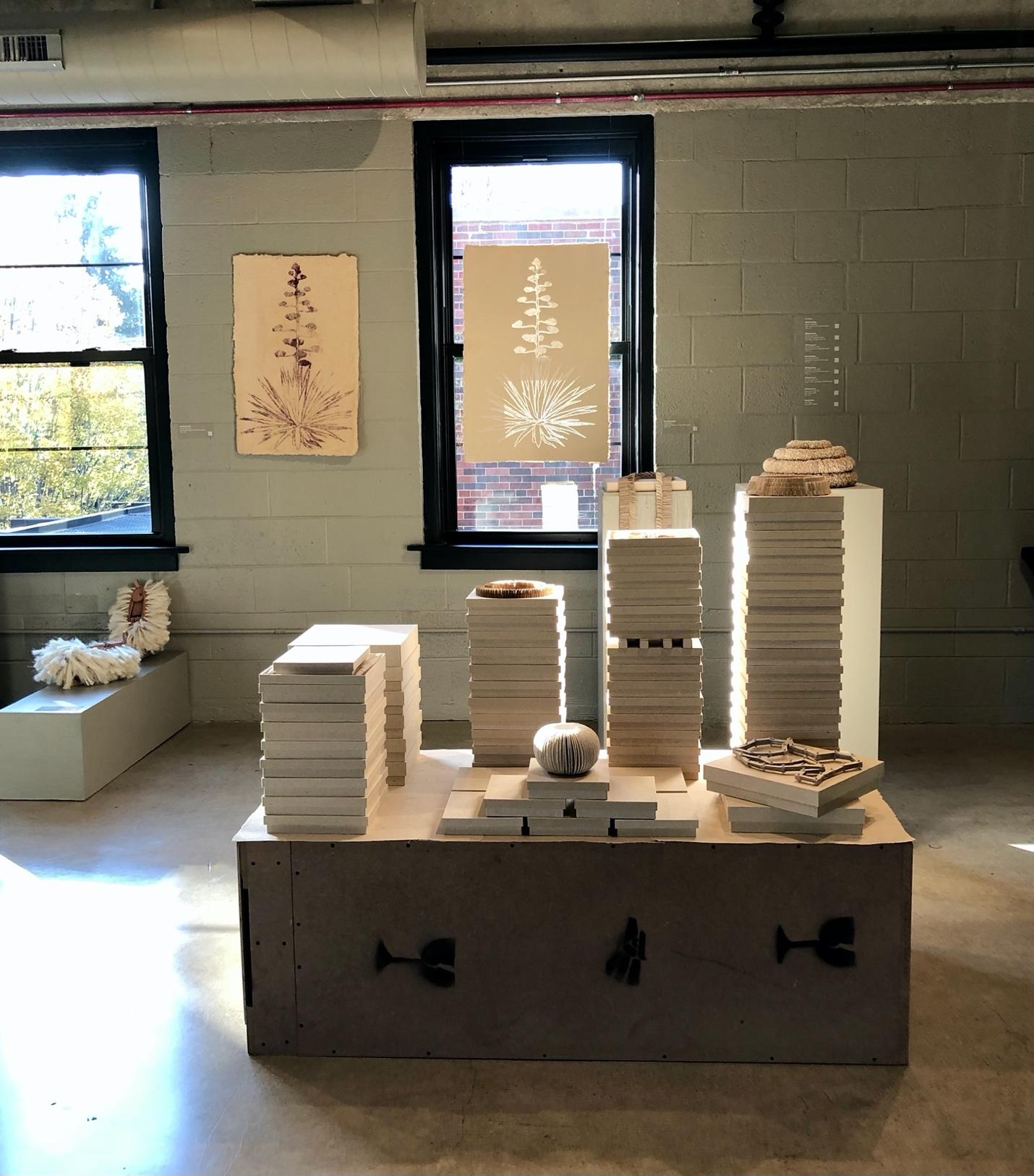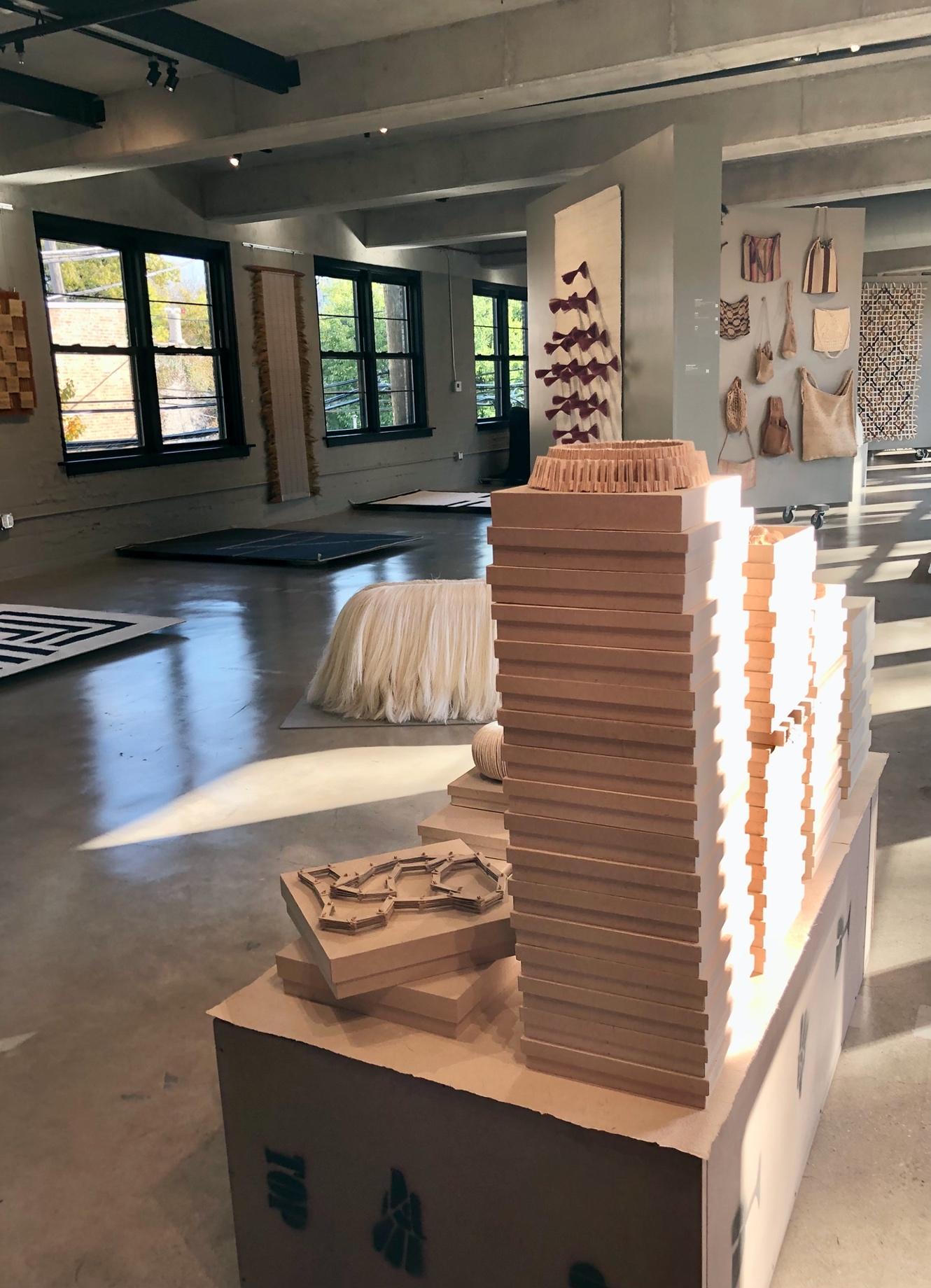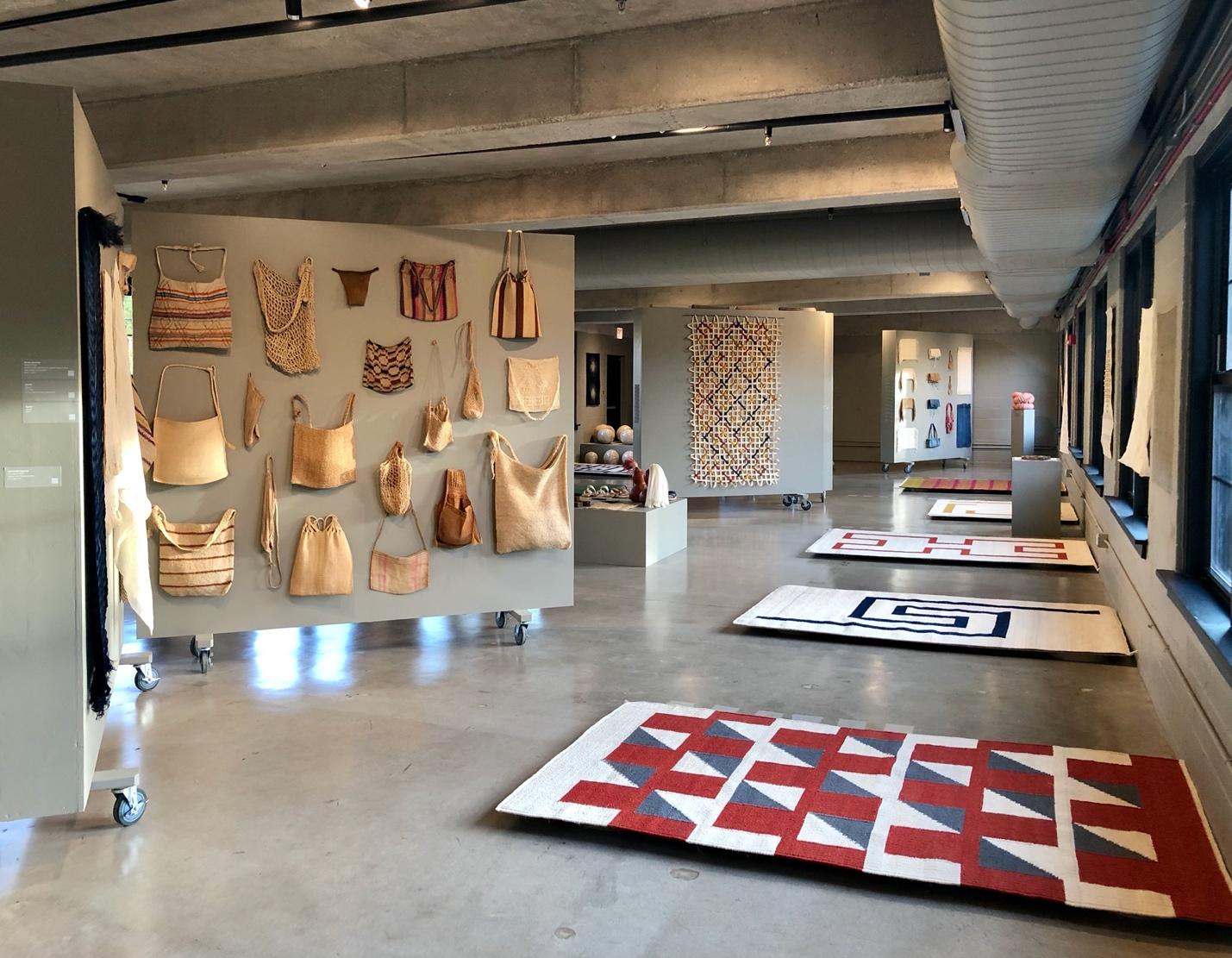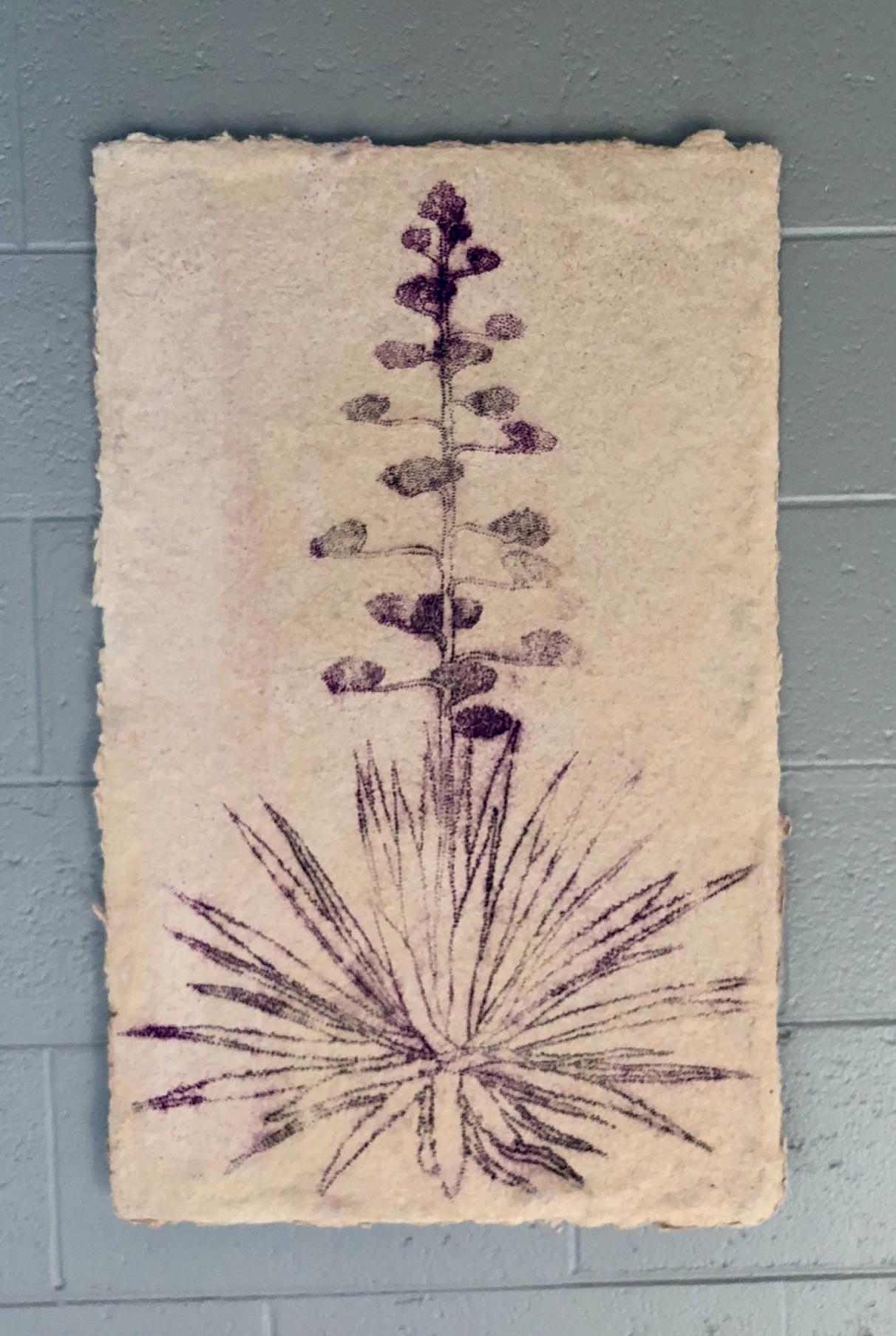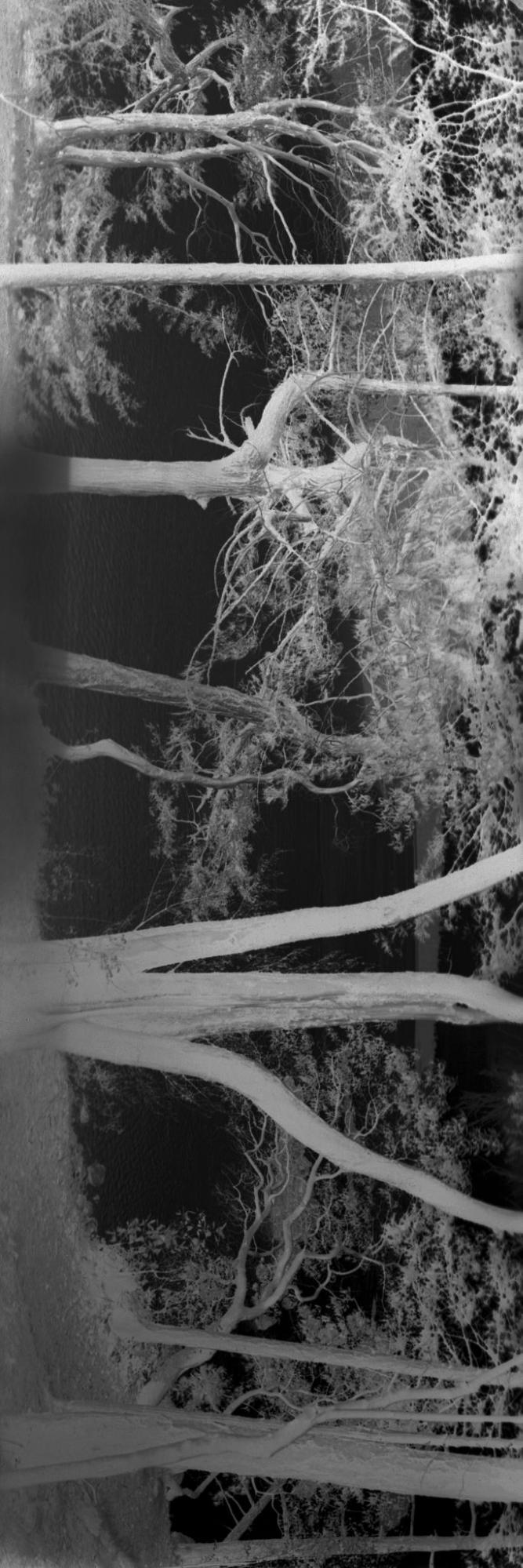A new venue opens: The Epiphany Center for the Arts, Chicago, IL.

ABOUT EPIPHANY CENTER FOR THE ARTS
Conceived with the vision to return Epiphany to a place for people to once again congregate in, the shuttered, historic Church of the Epiphany has been preserved and adapted into an iconic cultural hub ‘For the Good of Art, Entertainment and Events’. Thoughtfully designed, the exemplary 42,000 square foot campus boasts three distinct venues and a stunning array of amenities, including art studios, classroom, exhibit space and gallery, a commercial and catering kitchen, café, VIP suite and a collection of artistically appointed outdoor spaces; a charming quarter-acre courtyard, spacious terrace and stunning patio. Epiphany’s diverse and inclusive art programming serve to unite community and artists alike while ‘Bringing Chicago Together’.
Two current exhibitions not to be missed!
CHASE GALLERY
November 6, 2021-April 9, 2022
Agave!, which runs in Chase Gallery until April, is an expansive group exhibition that features artwork made from agave leaves that were discarded as part of the mezcal production in Oaxaca, the state in Mexico from which mezcal originates. Curated by Trine Ellitsgaard and Kiff Slemmons, the show features works by Jim Bassler, Frank Connet, Angela Damman, Trine Ellitsgaard, Maddalena Forcella, Mariana Grapain, Anne Hirondelle, Ana Hernandez, Fernando Laposse, Miki Nagamine, Huemac Olivares, Michael Olszewski, Adán Paredes, Eric Ramirez, Aaron Robinson, Jose Angel Santiago, Kiff Slemmons, Veronique Tesseraud, Francisco Toledo and Venus y Loco.
Mezcal has been part of Mexican life, gastronomy and culture for centuries. The Spaniards called the agave plant “the tree of wonders”. Agave evolved in southern Mexico over six million years ago and Oaxaca is its center of diversity. Mezcal’s popularity exploded in recent years, transforming it from a local spirit to one that is known internationally. Patrons in New York, Los Angeles and everywhere in the world were now saying “with mezcal please”, and mezcal fever exploded, causing its demand to grow exponentially. As a result, people in Oaxaca began to produce more and more of it and a thriving international market was born. Every community and hill in the state was soon surrounded with agaves that were destined for mezcal.
There was, however, a downside to mezcal’s newfound fame. Once the agave plants are cut and distilled, there is an enormous surplus of leaves that are left to sit and dry until they are reabsorbed back into the soil. As production escalated, these leaves began to pose a significant problem for local communities. They created an imbalance in the equilibrium of their ecosystems, disturbing the soil and giving rise to insect infestation. The artists in this exhibition have responded to this crisis by creating works of art from this waste, turning these leaves into rugs, garments and other forms of art. They have learned to transform agave into fantastic pieces of design. They are participating in a virtuous cycle of turning a problem into an opportunity, of turning waste into beautiful, timeless objects. Agave! explores this transmutation.
Slemmons Gallery
November 20, 2021 – December 31, 2021
Epiphany Center for Arts is proud to announce the debut of its new exhibition space dedicated to photography, Slemmons Gallery, with the launch of The Chicago Cluster Project, organized by the artist and educator Jan Tichy and spanning nine exhibitions through the end of 2022. The Chicago Cluster Project – historical cameras for contemporary art and education – revolves around a collection of over 300 hundred historical cameras collected by photography curator and educator Rod Slemmons. The display of objects from the collection is accompanied by contemporary photography exhibitions by local photographers and educators working with cameras from the collection. The series opens with the exhibition Negatives, which Tichy enlarged from Slemmons’ black and white materials exposed in one of the panoramic cameras in the collection. He then recontextualized them to reflect on larger aspects of Slemmons’ work – photography and education – the driving concepts behind The Chicago Cluster Project. The contemporary photography projects and the full camera archive are accessible online at www.thechicagocluster.org and on @thechicagocluster.

